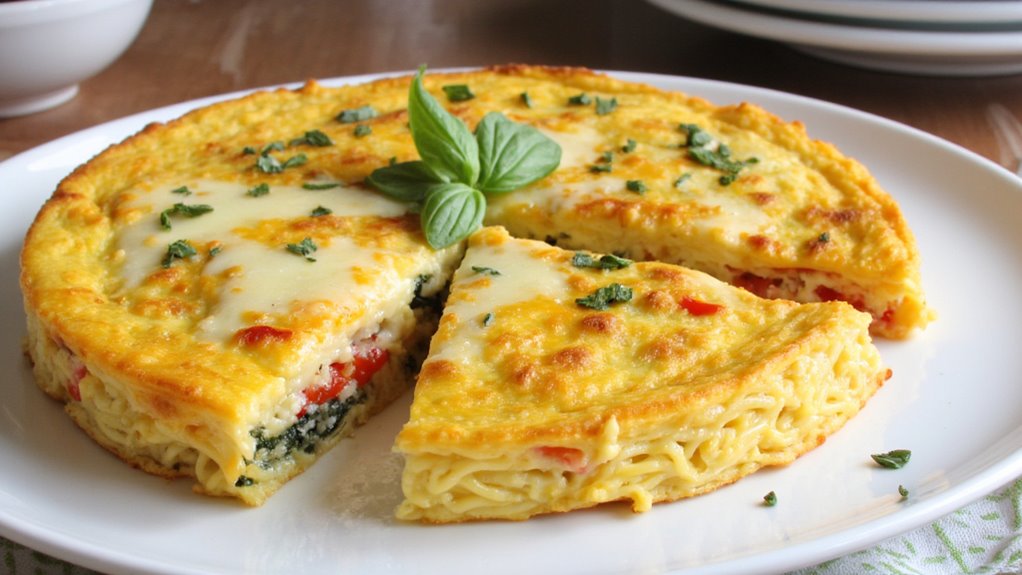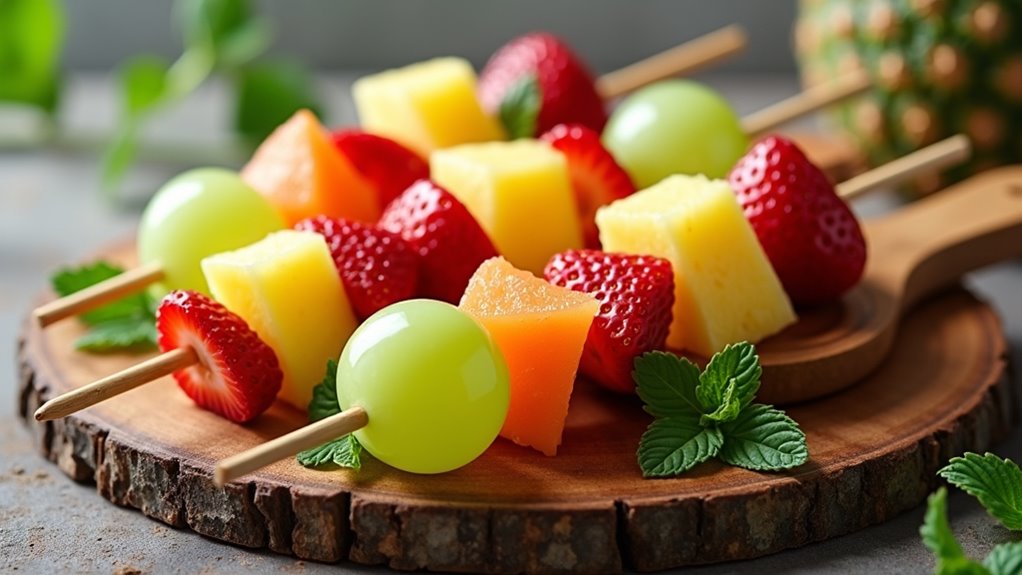Marco stormed into my kitchen last Tuesday, looking defeated. “I made too much spaghetti again,” he sighed, showing me a container of cold pasta. “The kids won’t touch leftovers.” I laughed, grabbing eggs from my fridge. “That’s not leftover pasta—that’s tomorrow’s frittata ingredients!” I showed him how Neapolitan grandmothers transformed yesterday’s simple spaghetti into protein-rich golden discs that even picky eaters devour. His eyes lit up when I explained the technique.
History & Origin
The spaghetti frittata emerged from Naples, Italy, as a resourceful culinary solution for transforming leftover pasta into a delicious new meal. Generations of Italian home cooks mastered using leftover spaghetti by combining it with eggs in a classic frittata technique.
This pasta frittata represents a traditional method of minimizing food waste while creating a hearty dish. Cooking the frittata requires simple ingredients and an oven method that turns leftovers into a crispy, satisfying meal.
Experts like Mark Bittman have highlighted this Neapolitan tradition, showcasing how humble ingredients can become a comforting, nutritious dish through creative preparation.
Recipe

The spaghetti frittata is a classic Italian dish that transforms leftover pasta into a delightful meal. Originating from Naples, this recipe showcases the culinary creativity of Italian home cooks who waste nothing and create something delicious from simple ingredients.
This versatile dish combines cooked spaghetti with eggs and cheese, creating a satisfying meal that can be enjoyed hot or at room temperature. The frittata offers a crispy exterior and a soft, flavorful interior that makes it perfect for breakfast, lunch, or a quick snack.
Ingredients
- 8 ounces leftover spaghetti, room temperature
- 4 large eggs
- ½ cup grated Parmesan or Pecorino cheese
- 1 cup torn fresh mozzarella
- 3 tablespoons olive oil
- Freshly ground black pepper to taste
Equipment
- 8- or 9-inch nonstick skillet
- Large mixing bowl
- Whisk or fork
- Spatula
- Plate for flipping (optional)
Instructions
- Preheat oven to 375°F (if using oven method)
- In a large bowl, mix spaghetti, eggs, Parmesan, mozzarella, and black pepper
- Heat olive oil in nonstick skillet over medium heat
- Pour pasta mixture into skillet, spreading evenly
- Cook on stovetop for 8 minutes until bottom is set and crispy
- Flip frittata using a plate or transfer to oven
- If flipping, cook other side for 5-10 minutes
- If using oven, bake for 20 minutes until eggs are set and edges are brown
- Remove from heat and let cool slightly before serving
Nutrition
400 kcal | 25g Carbohydrates | 22g Protein | 25g Fat | 12g Saturated Fat | 3g Polyunsaturated Fat | 8g Monounsaturated Fat | 220mg Cholesterol | 550mg Sodium | 250mg Potassium | 800 IU Vitamin A | 0mg Vitamin C | 350mg Calcium | 2mg Iron
Cooking Tips
For best results, ensure the pasta is at room temperature before mixing with eggs to create a more even texture. Feel free to customize the frittata by adding ingredients like prosciutto, sausage, or fresh tomato slices. If cooking for more people, increase eggs and cheese proportionally to maintain the right consistency.
Serving Suggestions
The spaghetti frittata shines when paired with light, fresh accompaniments that complement its rich flavor. A crisp green salad with a simple vinaigrette helps balance the dish’s richness, while a glass of chilled white wine like Pinot Grigio enhances the meal.
For a more substantial presentation, serve the frittata on a wooden cutting board garnished with fresh basil leaves or chopped parsley. The wedges can be arranged artfully, making it perfect for casual gatherings or as an elegant appetizer during wine tastings or cocktail parties.
Common Mistakes & Troubleshooting
One common mistake home cooks make isn’t allowing the frittata to set properly, resulting in a runny or unevenly cooked dish. For instance, I once rushed the cooking process and ended up with a partially raw center and overcooked edges.
To avoid this, cook the frittata on medium-low heat, ensuring even distribution of heat. If using the stovetop method, cover the skillet briefly to help the eggs cook more evenly. When flipping, use a plate slightly larger than the skillet and move confidently to prevent breaking the frittata.
Frequently Asked Questions
Can I Use Gluten-Free Pasta for Making Spaghetti Frittata?
Yes, I can definitely use gluten-free pasta for my spaghetti frittata! It’ll work perfectly fine and won’t compromise the dish’s texture or flavor. You’ll get the same delicious result with a gluten-free alternative that everyone can enjoy.
How Long Can Spaghetti Frittata Be Stored in the Refrigerator?
I recommend storing your frittata in an airtight container in the refrigerator for up to 3-4 days. Make sure it’s cooled completely before covering and chilling. Always check for any signs of spoilage before reheating.
Is Spaghetti Frittata Suitable for Vegetarian or Vegan Diets?
I’ll help vegetarians, but vegans might struggle. Classic spaghetti frittata contains eggs and often cheese, making it vegetarian-friendly. However, it’s not vegan unless you modify the recipe with plant-based egg substitutes and dairy alternatives.
Can Spaghetti Frittata Be Prepared in Advance for Meal Prep?
I’ll definitely recommend making this dish ahead! You can prepare the frittata, wrap it tightly, and refrigerate for up to two days. When you’re ready, just reheat it in the oven to maintain its crispy texture and delicious flavor.
What Are Some Common Mistakes to Avoid When Making Frittata?
I’ve learned frittata can easily turn rubbery if overcooked, so watch your heat carefully. Don’t overmix the eggs, and always use a non-stick pan. Remember to let it rest briefly before serving for the best texture.
Final Thoughts
This spaghetti frittata transforms humble leftovers into a showstopping meal that proves second-day pasta can shine. The beauty lies in its adaptability—add vegetables, meats, or different cheeses based on what’s in your refrigerator. Whether served hot for dinner or cold for lunch the next day, this frittata brings new life to ingredients that might otherwise go to waste.
Curious about another delicious way to reinvent your pasta? Check out my recipe for Potato Frittata with Prosciutto and Gruyere, where we take this concept in an entirely new direction!




